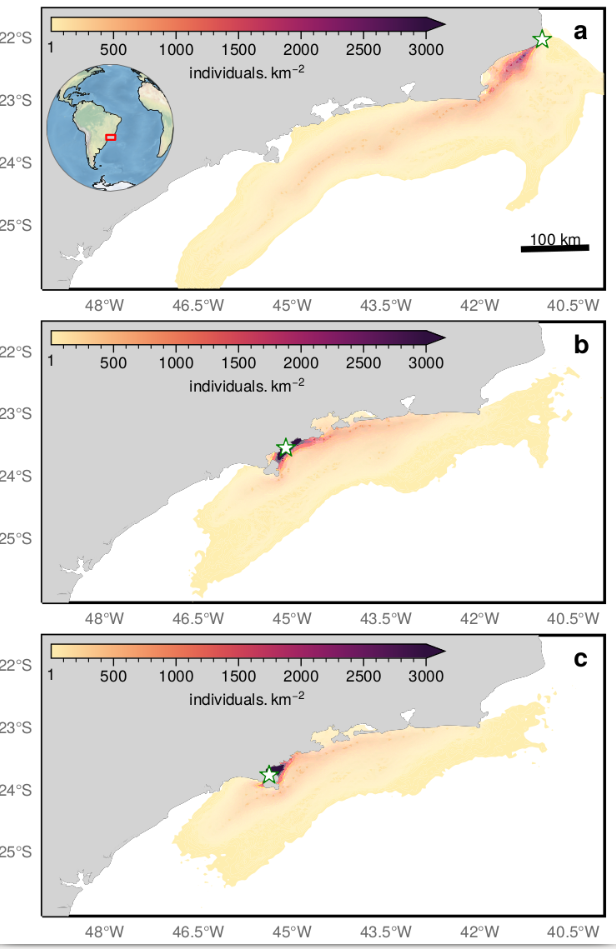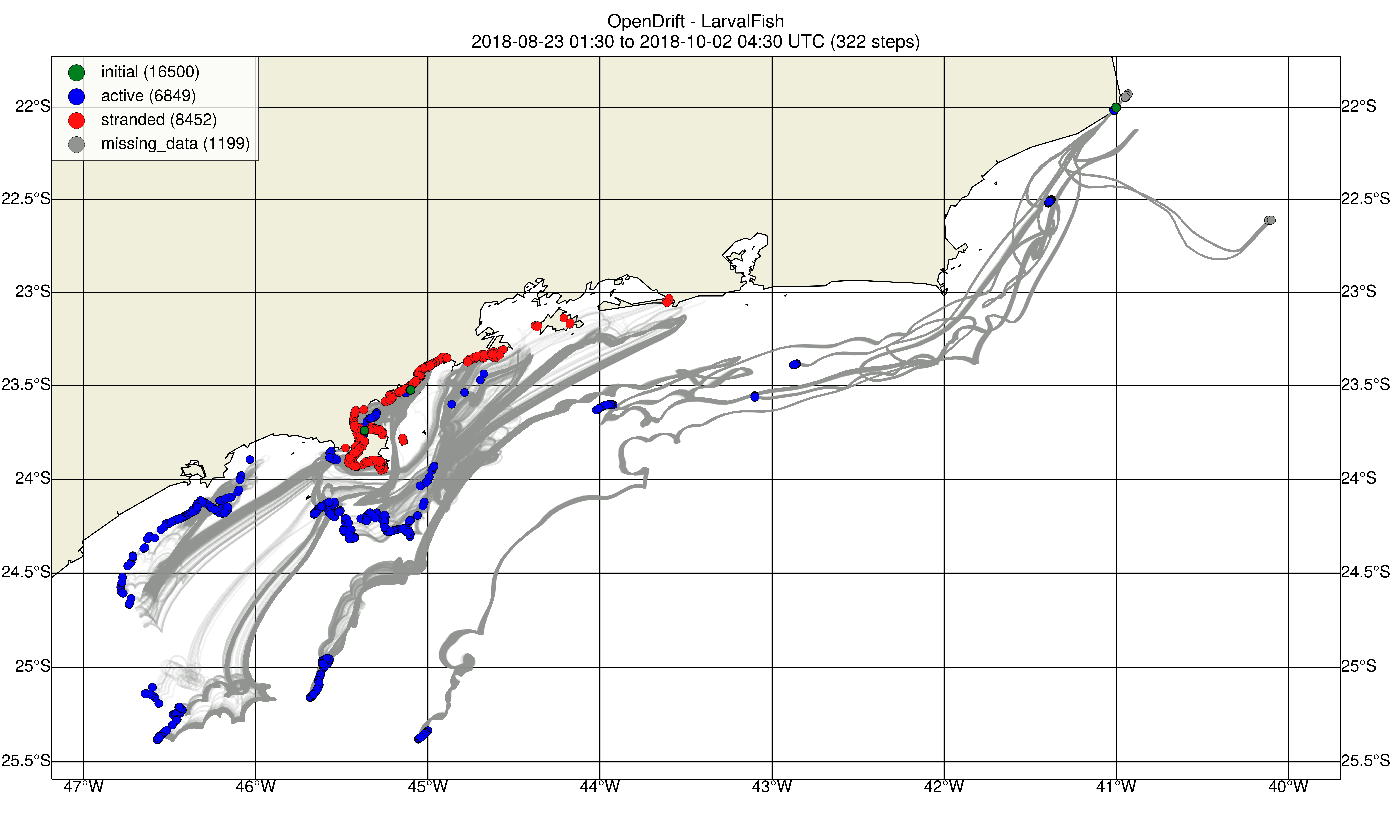This page presents a small description of some of the works I am involved with, that combines hydrodynamical and trajectory modeling, for different purposes:
Using OpenDrift to identify larvae dispersion (Perinereis ponteni)
"Seascape genetics and connectivity in a polychaete worm: disentangling the roles of a biogeographic barrier and environmental factors", published at Journal of Biogeography.In this work we applied the Opendrift - an open source software for modeling trajectories - to understand the dispersion of Perinereis ponteni, an annelid polychaete that only evolve from egg to larvae in coastal areas, such as rockys and sand. Using an entire year hydrodynamic modeling, from PreAMar - an operational forecast system for the South Brazil Bight -, we found that the hydrodynamics might act as a barrier, preventing larval exchange between different populations, from adjacent areas. This observation is evident in Figure 1. Panel Fig 1.a shows that organisms from this source never achieve shallow areas as it moves southward. Comparing this panel with the other two (Fig 1.b and c), it is clearly observed a barrier that we suppose to be a hydrodynamic barrier.

Fig. 1 - Population density considering 1000 daily seeded individuals in the vicinity of (a) Itaoca – ES, (b) Praia Dura - SP, and (c) Araçá - SP. Each individual is viable for an interval of 50 days. The white-green stars represent the seeding/sampling sites.

Fig. 3 - Example of larval fish dispersion. Figure courtesy of Arian Dialectaquiz Santos.
Evaluating marine plastic debris fate with OpenDrift
In preparation.